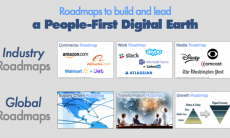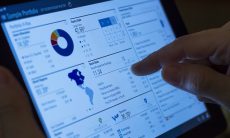I was at the Marketing Analytics Summit a few weeks back, and talked to a lot of people who felt that:
- Measurement was really important
- Measurement was really, really hard
The eternal struggle for marketers seems to be connecting marketing actions to business results. But this can’t be a reason to give up on analytics.
Are you driving sales? Prove it.
Marketers know how important we are to the process, but we’re also the first to face budget cuts when things get rough if we can’t directly prove our worth.
At the end of the day, no matter what your marketing techniques are, if you aren’t able to measure results, do you even know if they mattered? How do you, as a marketer, demonstrate the value you’re adding to the organization?
“Data is now fundamental to how people work, and the most successful companies have integrated it into everyone’s daily workflow. Data is the new application.” Frank Bien, CEO and President of Looker, sums up this need beautifully. Without centering data, marketing can falter.
People with a deep analytics background might already get this, but it is surprising both how difficult analytics remains, and how some people still don’t get it. They figure “I drop a bunch of stuff at the top of the funnel, and then my job is done.” Okay. But wait a minute. What about the middle and the end of the funnel? We need to be asking how this stuff progresses.
And let’s make no mistake, this is hard. B2C attribution is difficult but usually attainable. B2B attribution not only has a significant data integration challenge but there are process, technology, and often cultural impediments to measuring B2B results. So how do you work on this? Well, technology may be able to help.
Data Science is the Future.
Our Senior Strategist Mike Moran advocates for marketers to also become data scientists. He notes that “A lot of marketers got into marketing as a refuge from math.” They maybe liked the creative side — creating great copy, imagery, telling a story. Don’t get me wrong — those things are important. But if you don’t know your numbers in 2019 and 2020 you’re not going to live for very long in this business.
Getting the right data was the goal five years ago. Companies hired Chief Data Officers taking their data wrangling games to the next level. The reality? It’s more complicated than that. It’s not the data, it’s what you do with the data. If you haven’t seen results yet it’s because you haven’t yet put that data to work.
And that’s where data science is today, figuring out ways to put the data to work. Using advanced technologies like natural language processing (NLP) to understand the content the website visitors are consuming and pairing that data with machine learning educated models of desired journey patterns can help marketing teams qualify prospects and help sales reps picking up MQL progress the deals.
Because we’re years, if not decades, away from any form of general AI we’re going to have to continue to rely on specific models that help with very specific pain points in our process. There are many applications available today that operate within this sort of framework. It’s still important to be able to connect our marketing actions with measurable results. Some of these advanced capabilities make our ability to do so a little bit easier.
Interested in personalization with proven results? Check out SoloSegment’s technology solutions.








